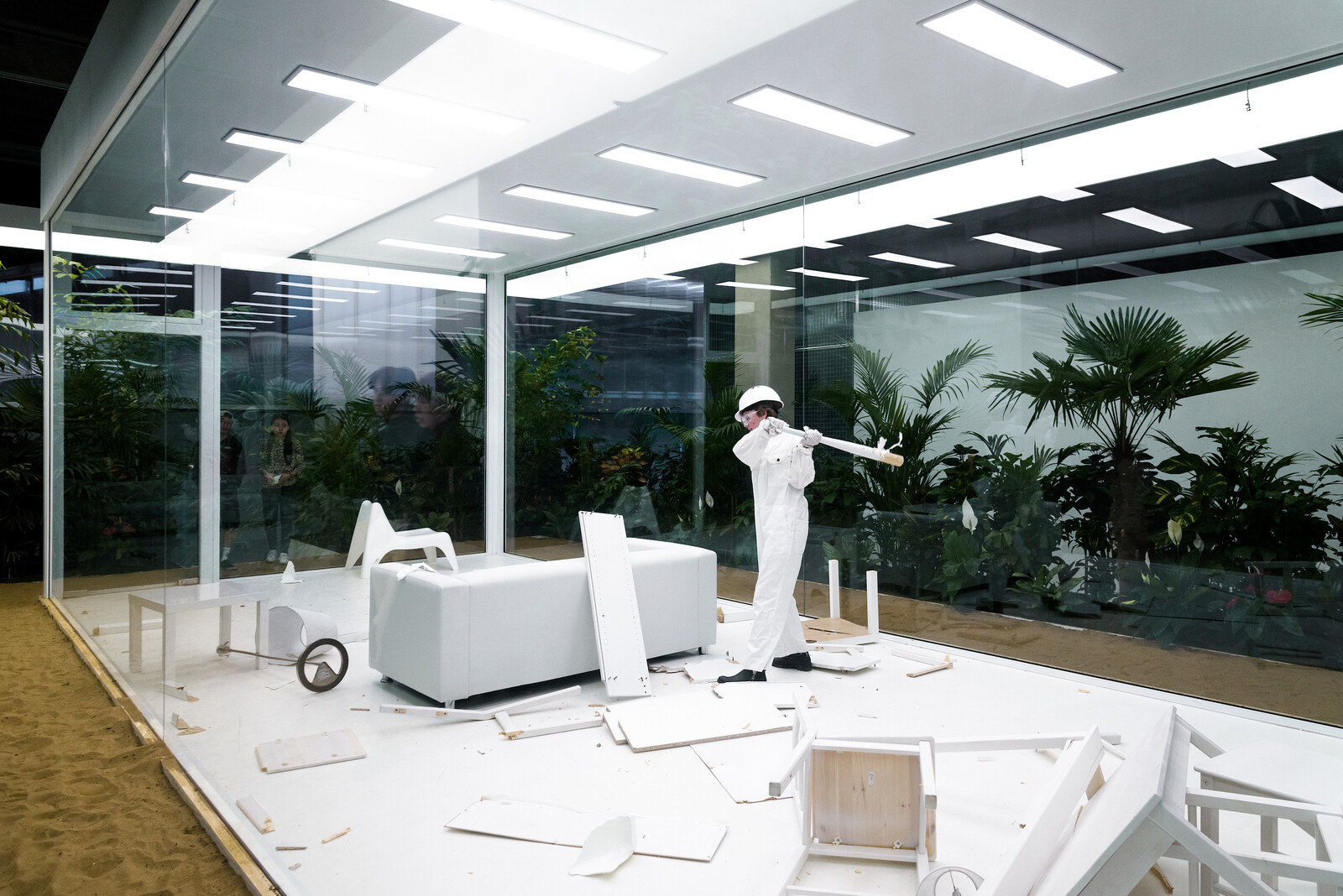Categories
Subjects
Authors
Artists
Venues
Locations
Calendar
Filter
Done
November 1, 2019 – Review
“The Coming World: Ecology as the New Politics 2030—2100”
Philomena Epps

According to the data provided by an online carbon footprint calculator, by taking a return flight from London to Moscow, I was responsible for the emission of 0.43 tons of CO2e, or carbon dioxide equivalent. I was flying to attend the opening of “The Coming World: Ecology as the New Politics 2030–2100” at Garage Museum of Contemporary Art in Moscow, which features artistic responses to ecology and nature. The cognitive dissonance required to excuse the substantial environmental impact of traveling more than 2,500 kilometers in order to comment on an exhibition that explores climate change is one of numerous contradictions I encountered during my visit.
This ambitious show is comparable in scale to a museum hang. There are over 50 works by Russian and international artists, including numerous large-scale installations, such as John Akomfrah’s elegiac six-channel film Purple (2017); Anastasia Potemkina’s luminous, site-specific halotherapy environment Pass Me The Salt, Please (2019); and Doug Aitken’s vast The Garden (2017–19), in which viewers are able to enter a glass room enclosed within a verdant greenhouse structure, and, if they wish, to smash up its contents with a baton. Any humor to be found in the cartoonishly violent catharsis of Aitken’s hot-headed hothouse …
September 23, 2013 – Review
5th Moscow Biennale of Contemporary Art, “More Light”
Anna Tolstova

At first glance, “More Light”—the title of the 5th Moscow Biennale’s main project curated by Catherine de Zegher—seems to describe the exhibition entirely. The broad and luminous space of the Manege Central Exhibition Hall is full of weightless and fragile works flowing through the space like draperies, many of which are, in fact, fabrics. However, each work in the exhibition calls for second glance or, better, gaze. A seemingly endless swath of wallpaper with a big, densely ornamented butterfly pattern looks totally decorative until one comes closer and realizes that the intricate patterns in the butterflies’ wings are composed of prison scenes with tortured inmates. The Time of Butterflies (2011) by Parastou Forouhar refers to the death of her parents, oppositional Iranian politicians murdered in Tehran fifteen years ago: the artist’s late mother’s name was Parvaneh, which means butterfly in Persian. “It is about the simultaneity of beauty and violence and the ambivalence of their coexistence,” she explains in an artist’s statement. And that comes to sound like a motto for “More Light” at the Manege, a sort of Kunsthalle, whose history is full of ambivalent moments and the wracked tension between art and politics.
Until this year, the Moscow Biennale …